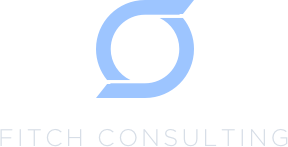Aligning to Leverage Organizational Collective Intelligence
There are likely a lot of knowledge silos within your organization. Imagine how much your company could improve if you found a way to harness all of the collective intelligence and experiences of everyone on your team. Traditional decision-making seems to dictate a top-down approach where leadership is often segregated from some of this siloed knowledge. But what if your leadership could align, then eliminate the communication barriers around that pool of collected knowledge? How could your organizational decisions improve if you had all of the available knowledge resources to fuel your leadership team?
Start with leadership alignment
Before your organization can even attempt to leverage the collective intelligence of your teams, you must begin to clearly focus on a leadership alignment strategy. If there’s disagreement or conflict at the top, it will trickle down to employees, and collectively it will create an environment where workers won’t feel safe to share their thoughts, opinions, and ideas. Assessing your level of leadership alignment starts with a few difficult questions:
Are your initiatives in line with your business goals?
Are the right people leading the right initiatives?
Is disagreement being addressed constructively?
Is every member of the leadership team fully on board with the strategy and the implementation plan?
Does every member of the leadership team even know their teams and the resources they offer?
When leadership isn’t aligned, your employees and the work they do won’t be, either. Resources will be misused, team relationships may fracture, and cross-functional teams will evolve into dysfunction. This process can occur gradually, and it can chip away at the bottom-line productivity that drives your organization.
Row in the same direction
Once leadership figures out how to row the ship in the same direction, it’s time to use that organizational collective intelligence to figure out the essential problems the organization aims to solve and the challenges or barriers that exist. Without this context, your departmental teams will lack an understanding of the goal — which means their measurable metrics won’t align. Simply put, what is your problem, who does it affect, and how can you solve it? This iterative process can be applied at the macro and micro levels. With this guiding principle, you’ll find that the communication barriers that are blocking knowledge flow between your siloed knowledge workers will begin to break down. What you’ll find as a result is that people will surprise you with a new level of clarity and productivity.
Build a cognitively diverse organization
Throughout this process, get ready to hear things you don’t like. This is what it means to be inclusive and create space for more voices to be valued. You don’t have to agree with everything being said; in fact, that’s the whole point. You need the full spectrum of intelligence, not just the facet that resonates with your point of view. Being defensive or directive in response to feedback could shut down critical intelligence coming your way in the future. Choose curiosity instead.
Team problem-solving improves when the group is cognitively diverse. Group-think can be a destructive force that stalls innovation. Organizations that foster high diversity in thought create a space where different problem-solving behaviors can thrive. Create teams that embrace collaboration by allowing individuals to break the rules enough to invent new approaches to your toughest problems. This opens all kinds of doors and pathways to a more inclusive level of knowledge sharing.
Doggedly pursue knowledge sharing as a cultural norm
Follow through and follow up — then follow through and follow up again. Be dogged in your pursuit of this new culture of collaboration between all workers, managers, and leaders. For example, if you’re doing a survey, realize that asking for feedback requires you to do something about it — so make it happen. If you’re missing the follow-up step or aren’t willing to make changes to the organization, people will know and won’t participate next time. Make a plan for action before sending out your survey and tell people how you will act on their opinions. Prepare by forming a cross-functional implementation team and scheduling a workshop for after the survey. Be sure to include a variety of functions and levels in the follow-through stage, not just leaders. Promptly share survey or idea results — all of them, even the difficult ones. Then find a way of getting everyone involved in creating solutions.
These changes will be welcomed in your organization. People feel invested in the solutions they help create, so engagement will improve. You’ll create more trust in your culture, and you’ll create a culture where feedback is safe and problems aren’t stopping points. Leaders won’t be the only ones responsible for solving everything anymore. Ownership is a powerful gift and you’ll find that when you pursue the collective sharing of knowledge you’ll reap the benefits across the enterprise.
Fitch Consulting is devoted to the art and science of creating organizational change. We can help your teams deal more effectively with the current and future high levels of internal and external complexities affecting your business. Contact us to start the conversation and find out more.




